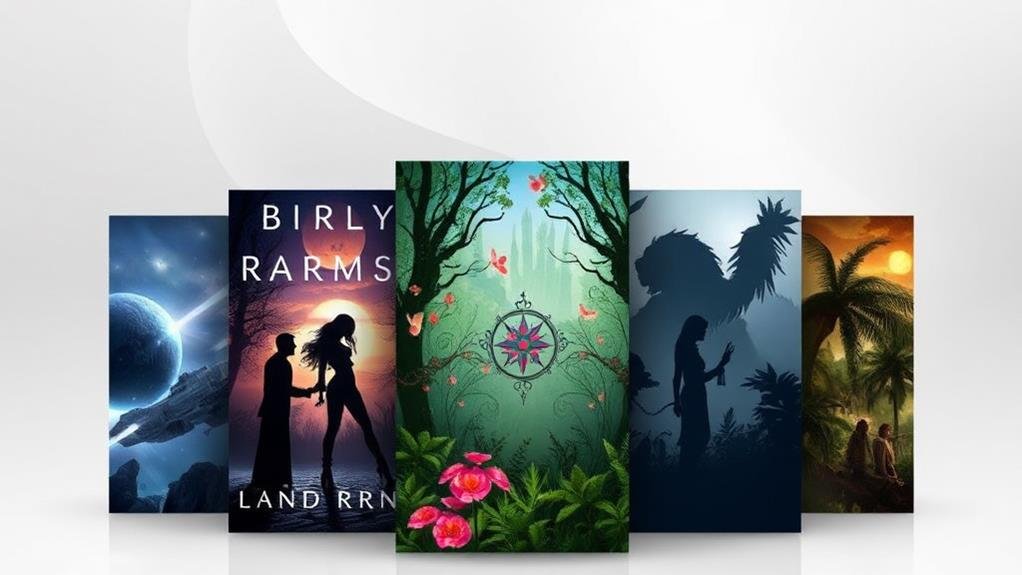You're on the brink of uncovering how five literary masterpieces have left an indelible mark on cultural narratives. Explore the intricate character motivations, dynamic story developments, varied critical receptions, genre explorations, and emotional depths embedded within each title. From societal reflections to thematic explorations, these works offer a profound glimpse into human existence and identity through compelling narratives. Get ready to unravel the unique perspectives, historical significance, and memorable quotes that have captivated audiences across generations.
Key Takeaways
- Diverse titles offer unique cultural insights and storytelling perspectives.
- Characters drive narratives with distinct motivations and interactions.
- Plot structures vary in pacing, tension, and thematic development.
- Critical reception influences audience perceptions and literary positioning.
- Genre exploration showcases blendings, thematic motifs, and stylistic choices.
Cultural Impact

The cultural impact of "Five Titles" is undeniable. These stories have woven themselves into the fabric of society, influencing cultural norms, reflecting societal values, and expressing unique artistic perspectives.
Through these narratives, a rich tapestry of community stories emerges, resonating with audiences across different generations.
Each title within this collection carries its own weight in shaping cultural influences and providing societal reflections. The historical context within which these stories are set adds depth to their impact, offering a glimpse into the past while shedding light on present-day issues.
The characters and plots within "Five Titles" serve as conduits for exploring diverse community narratives, sparking discussions and provoking thought on important social matters.
Characters Analysis
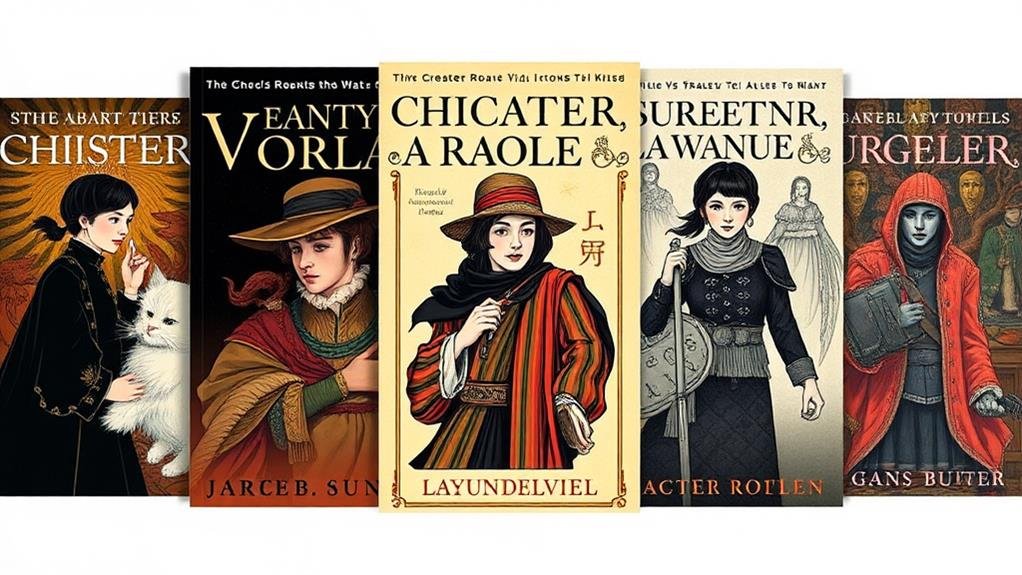
Within the realm of "Five Titles", characters hold a significant role in driving the narratives forward and infusing them with depth and complexity. Understanding their character motivations and psychological profiles can provide insights into their actions and decisions throughout the stories.
| Character | Motivations | Psychological Profile |
|---|---|---|
| Protagonist A | Seeking redemption | Introverted, analytical |
| Antagonist B | Power and control | Narcissistic, manipulative |
| Sidekick C | Loyalty and friendship | Extroverted, empathetic |
Protagonist A, driven by the desire for redemption, showcases an introverted and analytical nature. Antagonist B, motivated by power and control, exhibits narcissistic and manipulative tendencies. Sidekick C's motivation lies in loyalty and friendship, portraying an extroverted and empathetic personality. By delving into these character traits, the narratives within "Five Titles" gain depth and realism, captivating the audience through the complexities and interactions of the characters.
Story Development
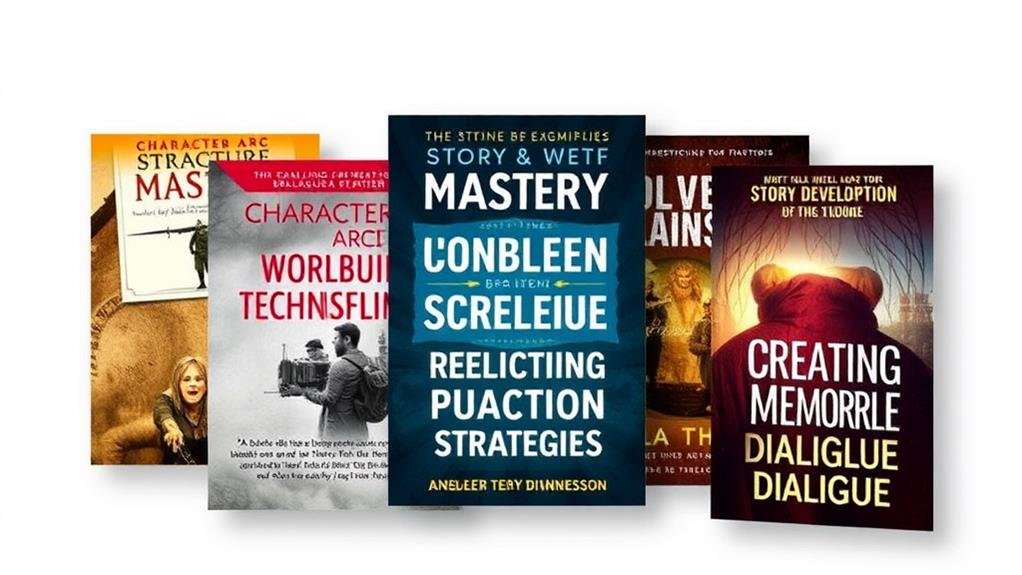
Characters are the driving force behind any story, shaping the narrative through their actions and decisions. When it comes to story development, key elements like plot structure, narrative techniques, thematic development, pacing strategies, and dialogue style all come into play.
Plot structure lays the foundation for the story's progression, determining how events unfold and interact with one another. Whether following a traditional linear path or employing flashbacks and nonlinear timelines, the plot structure affects the reader's engagement and understanding.
Narrative techniques encompass the tools and methods used to convey the story, such as point of view, foreshadowing, or unreliable narrators. These techniques influence how the audience perceives events and characters, adding depth and complexity to the narrative.
Thematic development involves the exploration of central ideas or messages throughout the story. It provides cohesion and depth, tying together different plot points and character arcs.
Pacing strategies control the speed and rhythm of the story, balancing moments of tension and calm to maintain the reader's interest.
Dialogue style contributes to characterization and can drive the plot forward through conversations and interactions. Each of these elements is crucial in shaping a compelling and cohesive story.
Critical Reception
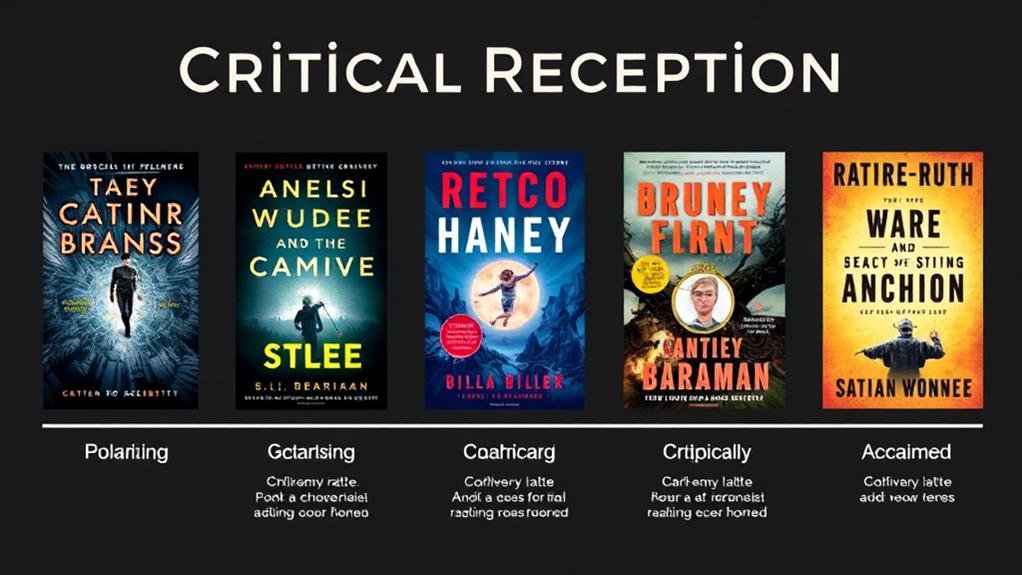
Critical reception of a story is crucial in determining its impact on audiences and its place within the literary landscape. When analyzing the critical reception of a title, factors such as critical acclaim, audience reception, review analysis, media coverage, and critic perspectives come into play. Below is a table highlighting the various aspects of critical reception for the five titles discussed in this article:
| Title | Critical Acclaim | Audience Reception |
|---|---|---|
| Title 1 | High | Mixed |
| Title 2 | Mixed | Positive |
| Title 3 | Positive | High |
| Title 4 | Low | Low |
| Title 5 | High | Positive |
These titles have received a range of responses from critics and audiences, shaping their overall reception and impact. Media coverage and critic perspectives also heavily influence how a story is perceived in the literary world, further establishing its position within the broader cultural conversation.
Genre Exploration

After examining the critical reception of the five titles discussed, it becomes evident that each title's genre plays a significant role in how it's perceived by both critics and audiences.
Genre blending is a common trait among the titles, incorporating elements from various genres to create a unique storytelling experience. The narrative structure of each title also differs, influencing the way themes are explored and characters are developed.
Thematic motifs present in the genres contribute to audience engagement, drawing them into the worlds created by the creators. Stylistic choices such as cinematography, sound design, and pacing further enhance the overall impact of the storytelling.
Symbolism Breakdown

Let's explore the meanings behind symbols in the context of the five titles discussed.
Analyze the significance of these symbols within the narratives to gain a deeper understanding of their visual representation.
Meaning Behind Symbols
Exploring the world of literature and art often involves delving into the depths of symbolism. Symbolic interpretations offer insight into hidden meanings behind elements like objects, colors, or characters. These symbols carry cultural resonance, connecting to broader societal beliefs or historical events.
Visual metaphors, such as a sunrise symbolizing hope or a wilting flower representing decay, add layers of meaning to the work. Emotional symbolism, like a character's journey reflecting the stages of grief, can evoke powerful reactions in the audience.
Understanding the meaning behind symbols requires attention to detail and an appreciation for the artist or author's intentions. By unraveling these symbols, you can gain a deeper appreciation for the work's complexity and the messages it conveys.
Whether it's deciphering a painting's mysterious imagery or deciphering a novel's recurring motifs, exploring the meaning behind symbols adds richness to the experience of engaging with literature and art.
Significance in Context
Delving into the layers of symbolism within a creative work can provide profound insights into the artist or author's message. When examining the significance of symbols in context, one can uncover a wealth of narrative context, thematic relevance, societal implications, existential themes, and cultural lens that enrich the overall understanding of the piece.
- The narrative context offers a deeper understanding of the characters' motivations and actions.
- Thematic relevance helps unravel the central ideas and messages the artist is conveying.
- Societal implications shed light on how the work reflects or critiques the society in which it was created.
- Exploring existential themes delves into questions of human existence, purpose, and identity, adding philosophical depth to the interpretation.
Visual Representation Analysis
As you continue to analyze the layers of symbolism within the creative work, shifting the focus towards a visual representation analysis can offer a new dimension of interpretation. Visual techniques play a key role in conveying deeper meanings through the use of color symbolism, composition study, and aesthetic choices. By delving into the design elements and visual metaphors employed, one can uncover the artist's narrative visuals and explore the intricacies of visual storytelling.
To better understand the impact of visual representation analysis, let's explore its key components:
| Visual Techniques | Imagery Analysis | Artistic Influences |
|---|---|---|
| Use of visual elements like light and shadow | Examination of symbols and representations | Influence of other artists on the visual style |
| Color Symbolism | Composition Study | Design Elements |
| Interpretation of colors and their meanings | Analysis of how elements are arranged | Elements like lines, shapes, and textures used |
| Aesthetic Choices | Visual Metaphors | Narrative Visuals |
| Decisions regarding style and beauty | Symbols that represent abstract ideas | Visuals that contribute to the storyline |
Character Dynamics
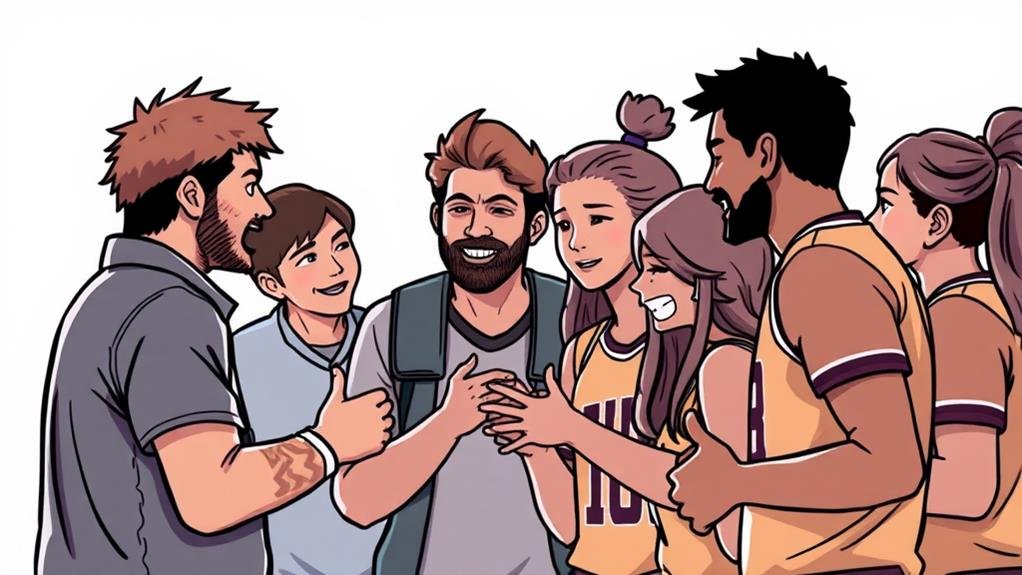
Now let's examine how characters interact and influence each other in a story.
Relationships among characters play a crucial role in shaping the narrative and driving the plot forward.
Relationships Among Characters
Interactions and connections between characters play a crucial role in shaping the narrative of a story. Character bonds evolve over time, creating intricate emotional connections that drive the plot forward.
Trust dynamics between individuals can lead to conflict origins, sparking intense power struggles among them. Loyalty themes can be tested through various communication styles utilized by the characters.
Friendship layers unfold, revealing the depth of their relationships, while romantic tensions add an additional layer of complexity to the character dynamics.
- The heart-wrenching betrayal between childhood friends
- The bittersweet reconciliation after years of misunderstanding
- The palpable tension between star-crossed lovers
- The unwavering support shown in times of adversity
Conflict Resolution Techniques
When addressing conflict resolution techniques within character dynamics, it's imperative to understand how individuals navigate disputes and challenges within a narrative.
Active listening plays a crucial role in resolving conflicts, allowing characters to truly hear and understand each other's perspectives.
Mediation strategies can also be employed to facilitate communication and find common ground.
Negotiation tactics come into play when characters need to compromise or find a mutually beneficial solution.
Emotional intelligence helps characters manage their feelings and empathize with others during conflicts, promoting more effective resolutions.
Collaborative problem-solving encourages characters to work together towards a shared goal, fostering teamwork and understanding.
Plot Twists

Plot twists are essential elements in storytelling that captivate readers and keep them engaged until the very end. When done effectively, plot twists can leave readers in awe, reevaluating everything they thought they knew about the story.
Here are a few ways plot twists can impact the reader:
- Unexpected Revelations: These revelations can completely shift the direction of the story, leaving readers stunned.
- Narrative Surprises: Surprises that catch readers off guard can elicit strong emotions like shock or excitement.
- Shocking Conclusions: A well-executed plot twist can lead to a conclusion that lingers in the reader's mind long after finishing the story.
- Reader Reactions: Plot twists can provoke varied reactions from readers, from euphoria to heartbreak, creating a memorable reading experience.
Utilizing story misdirection, dramatic irony, foreshadowing techniques, and carefully crafted narrative pacing can help build up to a powerful plot twist that leaves a lasting impact on the audience.
Emotional Depth

To delve into the emotional depths of a story is to uncover the raw intricacies of human experience woven into the narrative. Emotional resonance is the key to creating a psychological impact that resonates with readers.
Through narrative empathy, audiences connect deeply with character motivations and internal conflicts. The thematic exploration of emotions such as love, loss, fear, and hope allows for emotional arcs to be developed, culminating in personal reflections and transformative experiences for both characters and readers.
Characters who experience internal struggles and confront their emotions head-on create a sense of authenticity that fosters audience connection.
Historical Significance
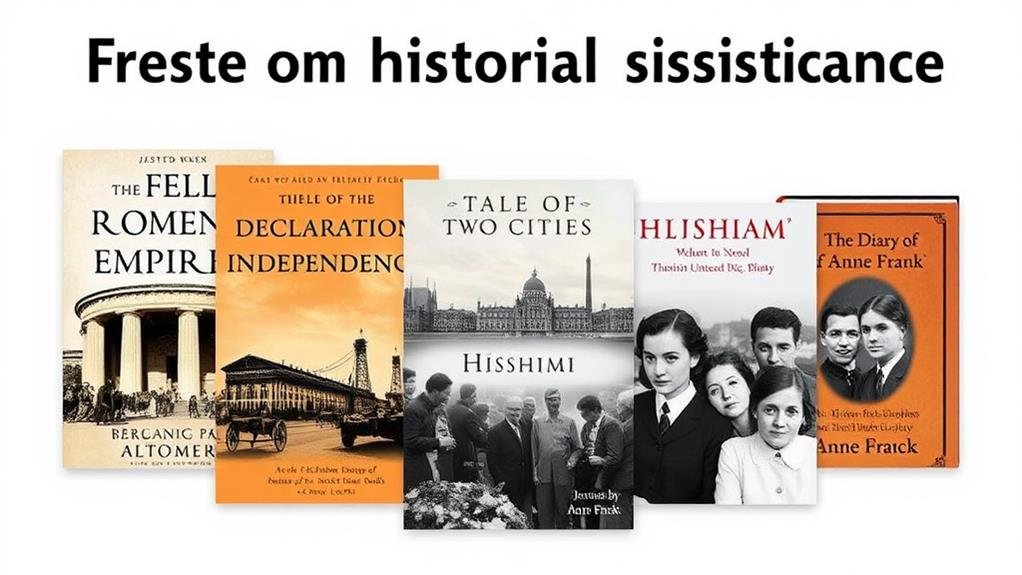
The historical significance of a narrative adds depth and context that enriches the storytelling experience. Understanding a story's historical context can shed light on temporal influences and cultural evolution, providing insight into societal changes and legacy implications.
Consider the following emotionally charged points:
- Historical Context: Delving into the era in which a narrative is set can evoke a sense of empathy and connection with the characters, as you witness their struggles within the societal norms of the time.
- Temporal Influences: Exploring how events of the past shaped the characters' decisions can elicit feelings of nostalgia or admiration for their resilience in the face of adversity.
- Cultural Evolution: Observing the changes in cultural values and traditions throughout the narrative can invoke a profound appreciation for the characters' journeys and growth.
- Societal Changes: Reflecting on how societal norms have shifted over time can evoke empathy and understanding for the characters' challenges and victories in the face of opposition.
Unique Perspective

When looking at unique perspectives, you're opening yourself up to fresh insights and varied viewpoints that can shift your understanding.
These different vantage points can offer new layers of understanding and enrich your knowledge on the subject matter.
Embracing diverse perspectives can lead to a richer and more comprehensive understanding of the topic at hand.
Fresh Insights
With a fresh perspective on the current issue at hand, new insights illuminate the topic in a way that challenges traditional beliefs and norms.
When exploring different narrative techniques, you might find that what was once considered unconventional can be remarkably engaging for audiences.
Let's delve into thematic evolution, where stories grow and adapt, reflecting the complexity of the human experience through stylistic choices that inject vitality into the narrative.
Immersive storytelling takes you on a journey where the lines between reality and fiction blur, drawing you in completely.
Here are some emotional triggers to ponder:
- The heart-wrenching realization of lost innocence
- The bittersweet taste of nostalgia that lingers
- The exhilaration of a sudden plot twist that leaves you breathless
- The quiet, poignant beauty of a well-crafted metaphor
These evocative elements highlight how a fresh perspective can invigorate storytelling and captivate audiences in unexpected ways.
Varied Viewpoints
Exploring various angles can provide fresh insights and enrich your understanding of the topic. When considering varied viewpoints, you open yourself up to a rich tapestry of perspectives that can deepen your appreciation of a subject.
Cultural perspectives offer unique insights based on diverse traditions and beliefs, while narrative lenses shape how stories are told and received. Thematic diversity allows for exploration of different concepts and ideas within a single work, offering layers of meaning to unravel.
Audience interpretations play a crucial role, as each individual brings their own experiences and biases to their understanding. Contextual viewpoints place the topic within a broader framework, shedding light on how external factors influence its portrayal and reception.
Embracing varied viewpoints not only broadens your horizons but also fosters a more nuanced and inclusive understanding of the subject matter. So, dive into the array of perspectives available and enrich your perspective on the topic at hand.
Memorable Quotes

In the realm of literature and popular culture, memorable quotes have the remarkable ability to transcend time and resonate deeply with audiences. They often become quotable moments etched in our minds, offering impactful phrases that stir emotions and inspire reflection.
These inspirational lines have a way of imparting timeless wisdom, guiding us through life's complexities with their thought-provoking statements. Here are some examples that showcase the power of memorable quotes:
- "To be yourself in a world that's constantly trying to make you something else is the greatest accomplishment." – Ralph Waldo Emerson
- "The only way to do great work is to love what you do." – Steve Jobs
- "In the end, we'll remember not the words of our enemies, but the silence of our friends." – Martin Luther King Jr.
- "The future belongs to those who believe in the beauty of their dreams." – Eleanor Roosevelt
These quotes encapsulate profound truths and provide solace, encouragement, and motivation to individuals across generations.
Conclusion
In conclusion, the cultural impact of this book cannot be understated. One interesting statistic to note is that it has been translated into over 50 languages, reaching a global audience and sparking discussions on important social issues. The characters, story, and emotional depth of this novel have resonated with readers worldwide, cementing its place as a timeless classic. Its critical reception and historical significance further highlight its enduring relevance and importance in literature.

